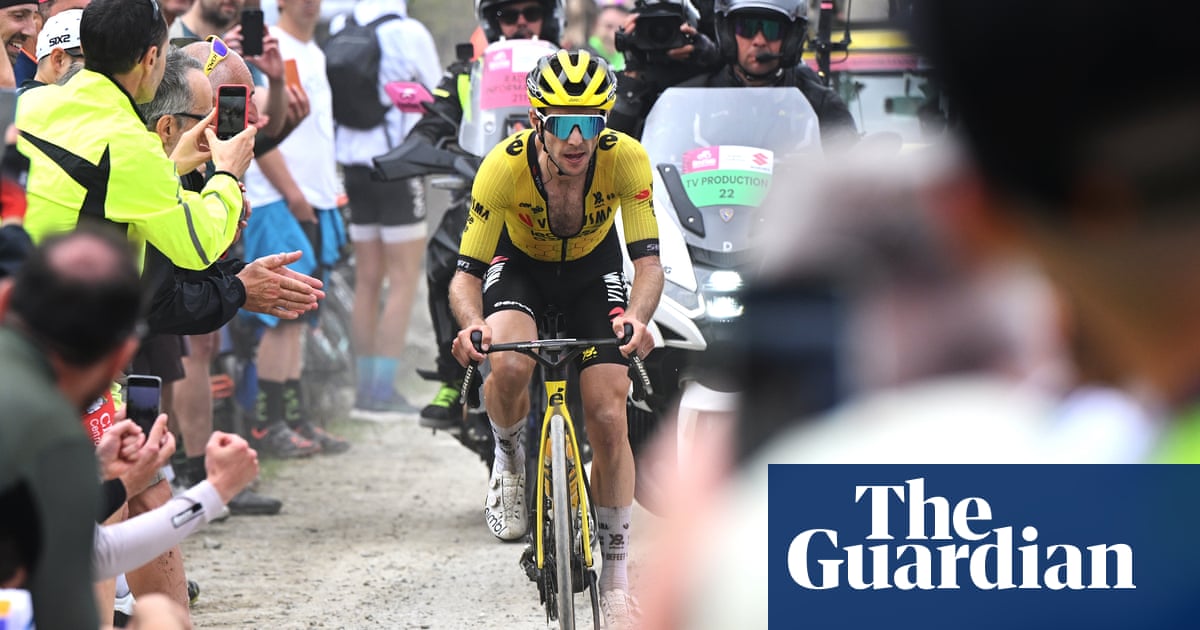The Mexican standoff is a much-loved cinematic device, but the stalemate beloved of western movie script writers has rarely, if ever, decided one of cycling’s Grand Tours. The 2025 Giro d’Italia was the exception, appositely as the biggest loser was an actual Mexican, Isaac del Toro, with the unassuming LancastrianSimon Yatesthe two-wheeled equivalent of the bandit who skips off with the loot, while two other bandits – in this case Richard Carapaz and Del Toro – stare each other down waiting for the other man to blink.
Yates’s second career Grand Tour win,forged on the Colle delle Finestre on Saturdayafternoon in a peerless display of courage and cunning, and sealed 24 hours later in the streets of Rome, will go down in cycling’s annals as one of the most improbable heists the sport has witnessed.
The endless joy of the Grand Tours – Spain, France, Italy – is that they throw up all kinds of delightful scenarios, but there have been few, if any, where the decisive plot line was a frozen stalemate between the cyclists in first and second places, each waiting for the other to move while a third man skipped away to victory. This was probably the most bizarre act of self-immolation in a Grand Tour since 1989, when Pedro Delgado wrecked his race on day one by getting lost en route to the start of the prologue time trial.
To understand how this happened, the first key element is Yates himself. Now 32, his career has been marked by two qualities: patience and sang-froid. His ability to wait for the right moment, and to seize that moment, has been the hallmark of his best wins, going back to his earliest triumphs: his 2011 stage win in the Tour de l’Avenir, his 2013 world title in the points race on the velodrome in Minsk, and his Tour of Britain stage win later that year.
When he threw caution to the winds, at the Giro in 2018, it backfired spectacularly at the end of the three weeks, in no less a place than the Colle delle Finestre; when he won the Vuelta a few months later, he had learned the lesson and bided his time. That it has taken so long for him to take a second Grand Tour can be largely summed up in one word: Slovenia. Seven years ago, no one would have predicted the rise and rise of Tadej Pogacar and Primoz Roglic. Yates first looked like a potential winner on the day that Del Toro took the race lead, the gravel‑road stage into Siena, and he had ridden the perfect race since then, never losing enough time to rule him out, never putting his cards on the table.
It took more than guts and patience; it needed the other pieces of the tactical jigsaw to slot into place. His team, Visma‑Lease-a-Bike, did what they had to do best: sending a satellite rider ahead in the day’s main escape in case of need.
Most days, the pawns had had limited impact; here, the strongest and most versatile, the Belgian Wout van Aert, was in the perfect position to help Yates to mess with Del Toro’s and Carapaz’s minds.
Neither the Mexican nor the Ecuadorian had a teammate in place alongside Van Aert, an egregious blunder, because if either man had had anequipierto hand at the key moment – at the foot of the descent off the Finestre with 36km remaining when Yates was still just about within reach – it could well have tipped the balance.
Sign up toThe Recap
The best of our sports journalism from the past seven days and a heads-up on the weekend’s action
after newsletter promotion
Unwittingly, Carapaz’s EF Education team slotted in another piece at the foot of the Finestre, where the EFdomestiquesensured that the peloton would hit the climb at warp speed, paving the way for Carapaz to attack Del Toro. In the event, the Ecuadorian was unable to dislodge the Mexican, but their violent acceleration achieved something more insidious: it burned off Del Toro’s teammates, who had defended his lead impeccably for 11 stages. By the time they rejoined Del Toro, Yates was long gone.
Once Yates had flown the coop at the foot of the Finestre, it was Del Toro’s job, as the race leader, to pursue the Lancastrian, whether or not he had any teammates with him. But he knew that to do so would expose him to a late attack from Carapaz, who had started the day only 43sec behind. And Carapaz was equally aware that if he chased, Del Toro might be the beneficiary. It needed either to seize the initiative, or for one team manager to issue an ultimatum to his rider. Without that, the upshot was the absorbing but unedifying spectacle of the pair freewheeling as Yates forged ahead with Van Aert – unedifying that is, unless you were a Visma team member, a British cycling fan or a connoisseur of the bizarre twists that bike racing unfailingly produces.
